Save The Date: 2024 Total Solar Eclipse
Save the Date: 2024 Total Solar Eclipse
On April 8, 2024, a total solar eclipse will travel through Mexico, cross the United States from Texas to Maine, and exit North America along Canada’s Atlantic coast. A total solar eclipse occurs when the Moon passes between the Sun and the Earth, completely blocking the face of the Sun. The sky will darken as if it were dawn or dusk.
Weather permitting, people throughout most of North and Central America, including all of the contiguous United States, will be able to view at least a partial solar eclipse. A partial solar eclipse is when the Moon only covers part of the Sun. People in Hawaii and parts of Alaska will also experience a partial solar eclipse. Click here to learn more about when and where the solar eclipse will be visible: go.nasa.gov/Eclipse2024Map
Not in the path of the eclipse? Join us online to watch the eclipse with NASA. Set a reminder to watch live: https://go.nasa.gov/3V2CQML
Make sure to follow us on Tumblr for your regular dose of space!
More Posts from Nasa and Others
The Smoke From a (Not-so) Distant Fire
Flying directly through thick plumes of smoke may seem more harrowing than exciting. But for members of the CAMP2Ex science team, the chance to fly a P-3 Orion straight through clouds of smoke billowing off fires from Borneo this week was too good an opportunity to pass up.

CAMP2Ex stands for the Cloud, Aerosol and Monsoon Processes in the Philippines Experiment. The 2, by the way, is silent.

It’s a field campaign based out of Clark in the Philippines, flying our P-3, a Learjet and collaborating with researchers on the research vessel Sally Ride to understand how tiny particles in the atmosphere affect cloud formations and monsoon season.

The tiny aerosol particles we’re looking at don’t just come from smoke. Aerosol particles also come from pollution, billowing dust and sea salt from the ocean. They can have an outsized effect on weather and climate, seeding clouds that bring rain and altering how the atmosphere absorbs the Sun’s heat.

The smoke we were flying Monday came from peat fires, burning through the soil. That’s pretty unusual — the last time Borneo had these kind of fires was in 2015, so it was a rare opportunity to sample the chemistry of the smoke and find out what’s mixing with the air.

The planes are loaded with instruments to learn more about aerosol particles and the makeup of clouds, like this high-speed camera that captures images of the particles in flight.

One instrument on the plane collects droplets of cloud water as the plane flies through them, and on the ground, we test how acidic and what kind of particles form the cloud drops.

All of these measurements are tools in improving our understanding of the interaction between particles in the air and clouds, rainfall and precipitation in the Pacific Ocean.

Learn more about the CAMP2Ex field campaign, here!
Make sure to follow us on Tumblr for your regular dose of space: http://nasa.tumblr.com
Around the World 100,000 Times
The International Space Station is a microgravity laboratory in which an international crew of six people live and work while traveling at a speed of five miles per second (or 17,500 miles per hour), orbiting Earth every 90 minutes.
Monday, May 16, marks the International Space Station’s 100,000th orbit!
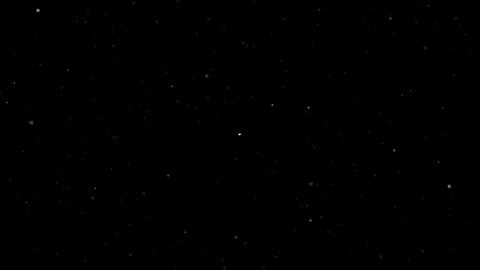
That’s more than 2,643,342,240 miles traveled! Which is also like 10 round trips to Mars, OR nearly the distance to Neptune!
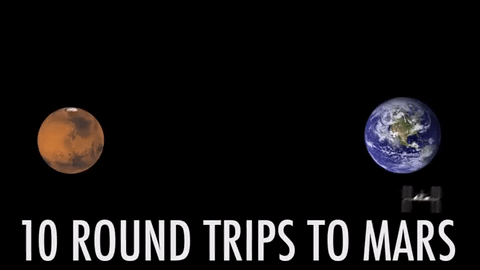
The space station has been in orbit for over 17 years, and during that time, over 1,922 research investigations have been performed. More than 1,200 scientific results publications have been produced as a result.
Important studies like the VEGGIE experiment, which is working to grow plants in microgravity, and the Twin’s Study, which is studying the impacts of microgravity on the human body, are helping us on our journey to Mars. Using this unique orbiting laboratory as a place to conduct research is helping us learn important things for future deep space missions.
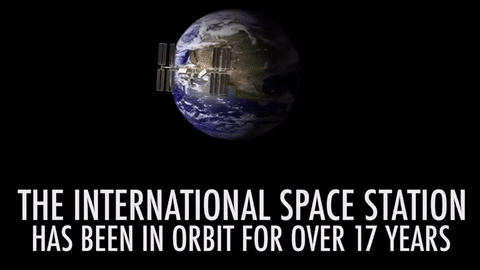
There have even been 222 different people that have visited the space station. This includes the current crew that is working and living on orbit.
Did you know that the space station is the third brightest object in the sky? If you know when and where to look up, you can spot it on your own! Find out when and where to look up HERE.
On Snapchat? Watch today’s Live Story to discover more about the orbiting laboratory and get a tour of the station! You can also add ‘nasa’ on Snapchat to get a regular dose of space.
Make sure to follow us on Tumblr for your regular dose of space: http://nasa.tumblr.com
What is it Like to be a NASA Intern?
We asked prospective interns that follow us on social media what questions they had for our current interns.
You asked…they answered! Let’s take a look:

Answer: “Yes, sometimes astronauts request to run through the International Space Station simulation that we have using the hyper-reality lab.”

Answer: “Persistence is the key to getting your first NASA internship. Work hard, study hard, keep applying and persevere.”

Answer: “NASA is looking for passionate, smart and curious, full-time students, who are U.S. citizens, at least 16 years of age and have a minimum 3.0 GPA.”

Answer: “In addition to STEM majors, NASA has many opportunities for students studying business, photography, English, graphics and public relations.”

Answer: “The highlight has been the chance to learn a lot more about embedded systems and coding for them, and just seeing how everyone’s efforts in lab come together for our small part in the AVIRIS-NG project.”

Answer: Yes! Here at the Kennedy Space Center is where all the action takes place. Check out the schedule on our website!”

Answer: “There are 10 NASA field centers and they all accept interns.”

Answer: "Yes, we do! I am currently working in tech development for an X-ray telescope that is launched into space to take pictures of our galaxy.”

Answer: “The greatest thing I’ve learned as a NASA intern is to not be afraid of failing and to get involved in any way you can. NASA is a very welcoming environment that offers a lot of opportunities for its interns to learn.”

Answer: My favorite experience from being a NASA intern is meeting people from all around the world and being exposed to the different cultures.”
Want to become a NASA intern? Visit intern.nasa.gov to learn about the open opportunities and follow @NASAInterns on Twitter and Facebook for regular updates!
Watch the full story on NASA Snapchat or Instagram until it expires on April 6.
Make sure to follow us on Tumblr for your regular dose of space: http://nasa.tumblr.com
Juno: Inside the Spacecraft

Our Juno spacecraft was carefully designed to meet the tough challenges in flying a mission to Jupiter: weak sunlight, extreme temperatures and deadly radiation. Lets take a closer look at Juno:
It Rotates!

Roughly the size of an NBA basketball court, Juno is a spinning spacecraft. Cartwheeling through space makes the spacecraft’s pointing extremely stable and easy to control. While in orbit at Jupiter, the spinning spacecraft sweeps the fields of view of its instruments through space once for each rotation. At three rotations per minute, the instruments’ fields of view sweep across Jupiter about 400 times in the two hours it takes to fly from pole to pole.
It Uses the Power of the Sun

Jupiter’s orbit is five times farther from the sun than Earth’s, so the giant planet receives 25 times less sunlight than Earth. Juno will be the first solar-powered spacecraft we've designed to operate at such a great distance from the sun. Because of this, the surface area of the solar panels required to generate adequate power is quite large.

Three solar panels extend outward from Juno’s hexagonal body, giving the overall spacecraft a span of about 66 feet. Juno benefits from advances in solar cell design with modern cells that are 50% more efficient and radiation tolerant than silicon cells available for space missions 20 years ago. Luckily, the mission’s power needs are modest, with science instruments requiring full power for only about six out of each 11-day orbit.
It Has a Protective Radiation Vault

Juno will avoid Jupiter’s highest radiation regions by approaching over the north, dropping to an altitude below the planet’s radiation belts, and then exiting over the south. To protect sensitive spacecraft electronics, Juno will carry the first radiation shielded electronics vault, a critical feature for enabling sustained exploration in such a heavy radiation environment.
Juno Science Payload:
Gravity Science and Magnetometers – Will study Jupiter’s deep structure by mapping the planet’s gravity field and magnetic field.

Microwave Radiometer – Will probe Jupiter’s deep atmosphere and measure how much water (and hence oxygen) is there.

JEDI, JADE and Waves – These instruments will work to sample electric fields, plasma waves and particles around Jupiter to determine how the magnetic field is connected to the atmosphere, and especially the auroras (northern and southern lights).
JADE and JEDI

Waves

UVS and JIRAM – Using ultraviolet and infrared cameras, these instruments will take images of the atmosphere and auroras, including chemical fingerprints of the gases present.
UVS

JIRAM

JunoCam – Take spectacular close-up, color images.

Follow our Juno mission on the web, Facebook, Twitter, YouTube and Tumblr.
Make sure to follow us on Tumblr for your regular dose of space: http://nasa.tumblr.com
Solar System: Things to Know This Week
Making every night science movie night with these amazing videos.

1. Pure Beauty
Our star sprouting coronal loops courtesy of the NASA sun team. See the full video: https://go.nasa.gov/2p47Lt2

2. Where’s the last place you'd expect to find enough ice to bury a city?
Answer: Mercury, the closest planet to the sun. Watch the video: https://svs.gsfc.nasa.gov/11184

3. The Mars Fleet
Only Earth has more satellites studying it. Full video: https://svs.gsfc.nasa.gov/4414

4. A Star-Studded Cast
Check out NASA's satellite fleet of Earth observers. See the video: https://svs.gsfc.nasa.gov/12586

5. Jupiter in Ultra HD
Thanks, Hubble Space Telescope! See the video: https://svs.gsfc.nasa.gov/12021

6. A Tear Jerker
Our Cassini spacecraft starts her 4.5-month Grand Finale this week. Full video: https://saturn.jpl.nasa.gov/resources/7628

7. Faster Than the Speed of Sound
Winds on Neptune travel faster than the speed of sound. Full video: https://svs.gsfc.nasa.gov/11349

8. A Musical Number
This one features the planet Uranus doing pop and lock. Full video: https://youtu.be/CWuWoiHmXUs

9. Up Close and Personal
Thanks to our New Horizons mission, we’ve been able to get up close and with Pluto. Full video: https://svs.gsfc.nasa.gov/12080

10: The Treasure Trove
TRAPPIST-1 is a treasure trove of seven Earth-sized planets orbiting a distant star. Full video: https://www.jpl.nasa.gov/video/details.php?id=1459
Discover more lists of 10 things to know about our solar system HERE.
Make sure to follow us on Tumblr for your regular dose of space: http://nasa.tumblr.com
Moving at the Speed of Arctic Ice
Time-lapses taken from space can help track how Earth’s polar regions are changing, watching as glaciers retreat and accelerate, and ice sheets melt over decades.

Using our long data record and a new computer program, we can watch Alaskan glaciers shift and flow every year since 1972. Columbia Glacier, which was relatively stable in the 1970s, has since retreated rapidly as the climate continues to warm.

The Malaspina Glacier has pulsed and spread and pulsed again. The flashes and imperfect frames in these time-lapses result from the need for cloud-free images from each year, and the technology limitations of the early generation satellites.

In Greenland, glaciers are also reacting to the warming climate. Glaciers are essentially frozen rivers, flowing across land. As they get warmer, they flow faster and lose more ice to the ocean. On average, glaciers in Greenland have retreated about 3 miles between 1985 and 2018. The amount of ice loss was fairly consistent for the first 15 years of the record, but started increasing around 2000.

Warmer temperatures also affect Greenland farther inland, where the surface of ice sheets and glaciers melts, forming lakes that can be up to 3 miles across. Over the last 20 years, the number of meltwater lakes forming in Greenland increased 27% and appeared at higher elevations, where temperatures were previously too cold for melt.

Whether they're studying how ice flows into the water, or how water pools atop ice, scientists are investigating some of the many aspects of how climate affects Earth's polar regions.
For more information, visit climate.nasa.gov.
Make sure to follow us on Tumblr for your regular dose of space: http://nasa.tumblr.com.
Hi Serena, what made you think, yes, I want to be an astronaut? And what's your favourite aquatic animal?
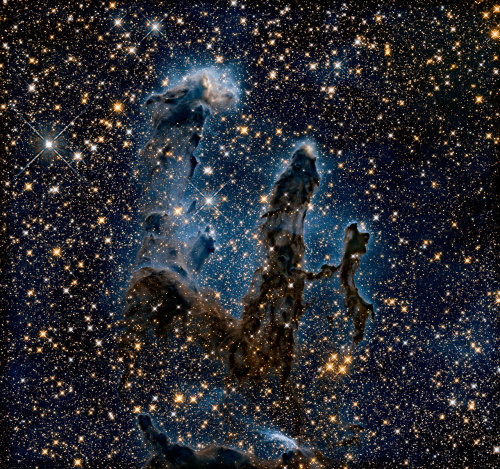
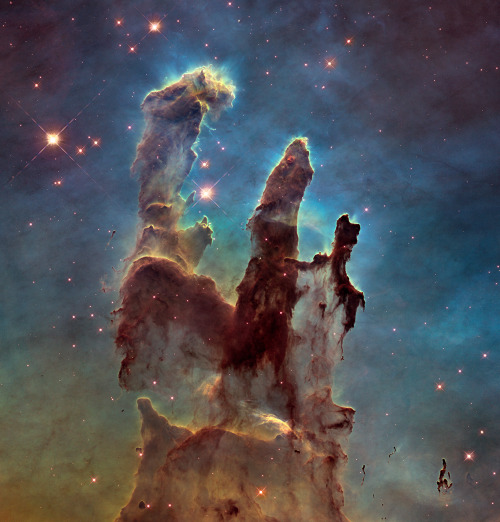
Sometimes... there’s more than meets the eye. 👀 You’re looking at two very different takes on an iconic image.
Human eyes can see only a small portion of the range of radiation given off by the objects around us. We call this wide array of radiation the electromagnetic spectrum, and the part we can see visible light.
In the first image, researchers revisited one of Hubble Space Telescope’s most popular sights: the Eagle Nebula’s Pillars of Creation. Here, the pillars are seen in infrared light, which pierces through obscuring dust and gas and unveil a more unfamiliar — but just as amazing — view of the pillars. The entire frame is peppered with bright stars and baby stars are revealed being formed within the pillars themselves. The image on the bottom is the pillars in visible light.
Image Credit: NASA, ESA/Hubble and the Hubble Heritage Team
Make sure to follow us on Tumblr for your regular dose of space: http://nasa.tumblr.com.
Five Ways the International Space Station’s National Lab Enables Commercial Research
A growing number of commercial partners use the International Space Station National Lab. With that growth, we will see more discoveries in fundamental and applied research that could improve life on the ground.

Space Station astronaut Kate Rubins was the first person to sequence DNA in microgravity.
Since 2011, when we engaged the Center for the Advancement of Science in Space (CASIS) to manage the International Space Station (ISS) National Lab, CASIS has partnered with academic researchers, other government organizations, startups and major commercial companies to take advantage of the unique microgravity lab. Today, more than 50 percent of CASIS’ experiments on the station represent commercial research.
Here’s a look at five ways the ISS National Lab is enabling new opportunities for commercial research in space.
1. Supporting Commercial Life Sciences Research

One of the main areas of focus for us in the early origins of the space station program was life sciences, and it is still a major priority today. Studying the effects of microgravity on astronauts provides insight into human physiology, and how it evolves or erodes in space. CASIS took this knowledge and began robust outreach to the pharmaceutical community, which could now take advantage of the microgravity environment on the ISS National Lab to develop and enhance therapies for patients on Earth. Companies such as Merck, Eli Lilly & Company, and Novartis have sent several experiments to the station, including investigations aimed at studying diseases such as osteoporosis, and examining ways to enhance drug tablets for increased potency to help patients on Earth. These companies are trailblazers for many other life science companies that are looking at how the ISS National Lab can advance their research efforts.
2. Enabling Commercial Investigations in Material and Physical Sciences

Over the past few years, CASIS and the ISS National Lab also have seen a major push toward material and physical sciences research by companies interested in enhancing their products for consumers. Examples range from Proctor and Gamble’s investigation aimed at increasing the longevity of daily household products, to Milliken’s flame-retardant textile investigation to improve protective clothing for individuals in harm’s way, and companies looking to enhance materials for household appliances. Additionally, CASIS has been working with a variety of companies to improve remote sensing capabilities in order to better monitor our oceans, predict harmful algal blooms, and ultimately, to better understand our planet from a vantage point roughly 250 miles above Earth.
3. Supporting Startup Companies Interested in Microgravity Research

CASIS has funded a variety of investigations with small startup companies (in particular through seed funding and grant funding from partnerships and funded solicitations) to leverage the ISS National Lab for both research and test-validation model experiments. CASIS and The Boeing Company recently partnered with MassChallenge, the largest startup accelerator in the world, to fund three startup companies to conduct microgravity research.
4. Enabling Validation of Low-Earth Orbit Business Models

The ISS National Lab helps validate low-Earth orbit business models. Companies such as NanoRacks, Space Tango, Made In Space, Techshot, and Controlled Dynamics either have been funded by CASIS or have sent instruments to the ISS National Lab that the research community can use, and that open new channels for inquiry. This has allowed the companies that operate these facilities to validate their business models, while also building for the future beyond station.
5. Demonstrating the Commercial Value of Space-based Research
We have been a key partner in working with CASIS to demonstrate to American businesses the value of conducting research in space. Through outreach events such as our Destination Station, where representatives from the International Space Station Program Science Office and CASIS select cities with several major companies and meet with the companies to discuss how they could benefit from space-based research. Over the past few years, this outreach has proven to be a terrific example of building awareness on the benefits of microgravity research.
Make sure to follow us on Tumblr for your regular dose of space: http://nasa.tumblr.com

Launch Your Creativity with Space Crafts!
In honor of the completion of our Nancy Grace Roman Space Telescope’s spacecraft — the vehicle that will maneuver the observatory to its place in space and enable it to function once there — we’re bringing you a space craft you can complete at home! Join us for a journey across the cosmos, starting right in your own pantry.
Stardust Slime
Ingredients:
1 5 oz. bottle clear glue
½ tablespoon baking soda
Food coloring
1 tablespoon contact lens solution
1 tablespoon glitter
Directions:
Pour the glue into a bowl.
Mix in the baking soda.
Add food coloring (we recommend blue, purple, black, or a combination).
Add contact lens solution and use your hands to work it through the slime. It will initially be very sticky! You can add a little extra contact lens solution to make it firmer and less goopy.
Add glitter a teaspoon at a time, using as much or as little as you like!
Did you know that most of your household ingredients are made of stardust? And so are you! Nearly every naturally occurring element was forged by living or dying stars.
Take the baking soda in this slime recipe, for example. It’s made up of sodium, hydrogen, carbon, and oxygen. The hydrogen was made during the big bang, right at the start of the universe. But the other three elements were created by dying stars. So when you show your friends your space-y slime, you can tell them it’s literally made of stardust!
Still feeling crafty? Try your hand at more pantry projects or these 3D and paper spacecraft models. If you’re eager for a more advanced space craft, check out these embroidery creations for inspiration! Or if you’re ready for a break, take a virtual tour of an interactive version of the Roman Space Telescope here.
Make sure to follow us on Tumblr for your regular dose of space!
-
 owl-of-the-woods liked this · 1 week ago
owl-of-the-woods liked this · 1 week ago -
 jtube90 liked this · 2 weeks ago
jtube90 liked this · 2 weeks ago -
 andy202405 liked this · 1 month ago
andy202405 liked this · 1 month ago -
 megabelltreazrae reblogged this · 3 months ago
megabelltreazrae reblogged this · 3 months ago -
 manarkhamiss reblogged this · 4 months ago
manarkhamiss reblogged this · 4 months ago -
 silvermags reblogged this · 4 months ago
silvermags reblogged this · 4 months ago -
 terensacratio liked this · 6 months ago
terensacratio liked this · 6 months ago -
 p-l-o-u-f liked this · 7 months ago
p-l-o-u-f liked this · 7 months ago -
 anamariaurrutia liked this · 7 months ago
anamariaurrutia liked this · 7 months ago -
 underwaternovice liked this · 9 months ago
underwaternovice liked this · 9 months ago -
 astarless-sky reblogged this · 10 months ago
astarless-sky reblogged this · 10 months ago -
 peyman-akbari liked this · 10 months ago
peyman-akbari liked this · 10 months ago -
 harveycurtis187 liked this · 11 months ago
harveycurtis187 liked this · 11 months ago -
 starchaserlovr liked this · 11 months ago
starchaserlovr liked this · 11 months ago -
 sylvanthorn liked this · 1 year ago
sylvanthorn liked this · 1 year ago -
 murderhumans liked this · 1 year ago
murderhumans liked this · 1 year ago -
 cone35 reblogged this · 1 year ago
cone35 reblogged this · 1 year ago -
 themandalilyan liked this · 1 year ago
themandalilyan liked this · 1 year ago -
 kasgho liked this · 1 year ago
kasgho liked this · 1 year ago -
 asongpanda1 liked this · 1 year ago
asongpanda1 liked this · 1 year ago -
 sleepdeprivedskelton liked this · 1 year ago
sleepdeprivedskelton liked this · 1 year ago -
 mguerreroia2024 liked this · 1 year ago
mguerreroia2024 liked this · 1 year ago -
 dabriaanderlaine liked this · 1 year ago
dabriaanderlaine liked this · 1 year ago -
 littleblackorb liked this · 1 year ago
littleblackorb liked this · 1 year ago -
 fishgeraldthealmostincel liked this · 1 year ago
fishgeraldthealmostincel liked this · 1 year ago -
 sharkman80 liked this · 1 year ago
sharkman80 liked this · 1 year ago -
 pictonatural reblogged this · 1 year ago
pictonatural reblogged this · 1 year ago -
 pictonatural liked this · 1 year ago
pictonatural liked this · 1 year ago -
 xenia12 liked this · 1 year ago
xenia12 liked this · 1 year ago -
 orion-archives liked this · 1 year ago
orion-archives liked this · 1 year ago -
 weirdodancer liked this · 1 year ago
weirdodancer liked this · 1 year ago -
 halfpoisonhalfgod liked this · 1 year ago
halfpoisonhalfgod liked this · 1 year ago -
 joshwinksmind-blog liked this · 1 year ago
joshwinksmind-blog liked this · 1 year ago -
 kandybatty liked this · 1 year ago
kandybatty liked this · 1 year ago -
 maisa-a reblogged this · 1 year ago
maisa-a reblogged this · 1 year ago -
 sirenascelestiales reblogged this · 1 year ago
sirenascelestiales reblogged this · 1 year ago -
 planet-solux reblogged this · 1 year ago
planet-solux reblogged this · 1 year ago -
 planet-solux liked this · 1 year ago
planet-solux liked this · 1 year ago -
 sirenascelestiales liked this · 1 year ago
sirenascelestiales liked this · 1 year ago -
 kai-etudie liked this · 1 year ago
kai-etudie liked this · 1 year ago -
 drsloppysawbonesmd reblogged this · 1 year ago
drsloppysawbonesmd reblogged this · 1 year ago -
 drsloppysawbonesmd liked this · 1 year ago
drsloppysawbonesmd liked this · 1 year ago -
 thesproutingartist reblogged this · 1 year ago
thesproutingartist reblogged this · 1 year ago -
 qcity-blackbird reblogged this · 1 year ago
qcity-blackbird reblogged this · 1 year ago
Explore the universe and discover our home planet with the official NASA Tumblr account
1K posts